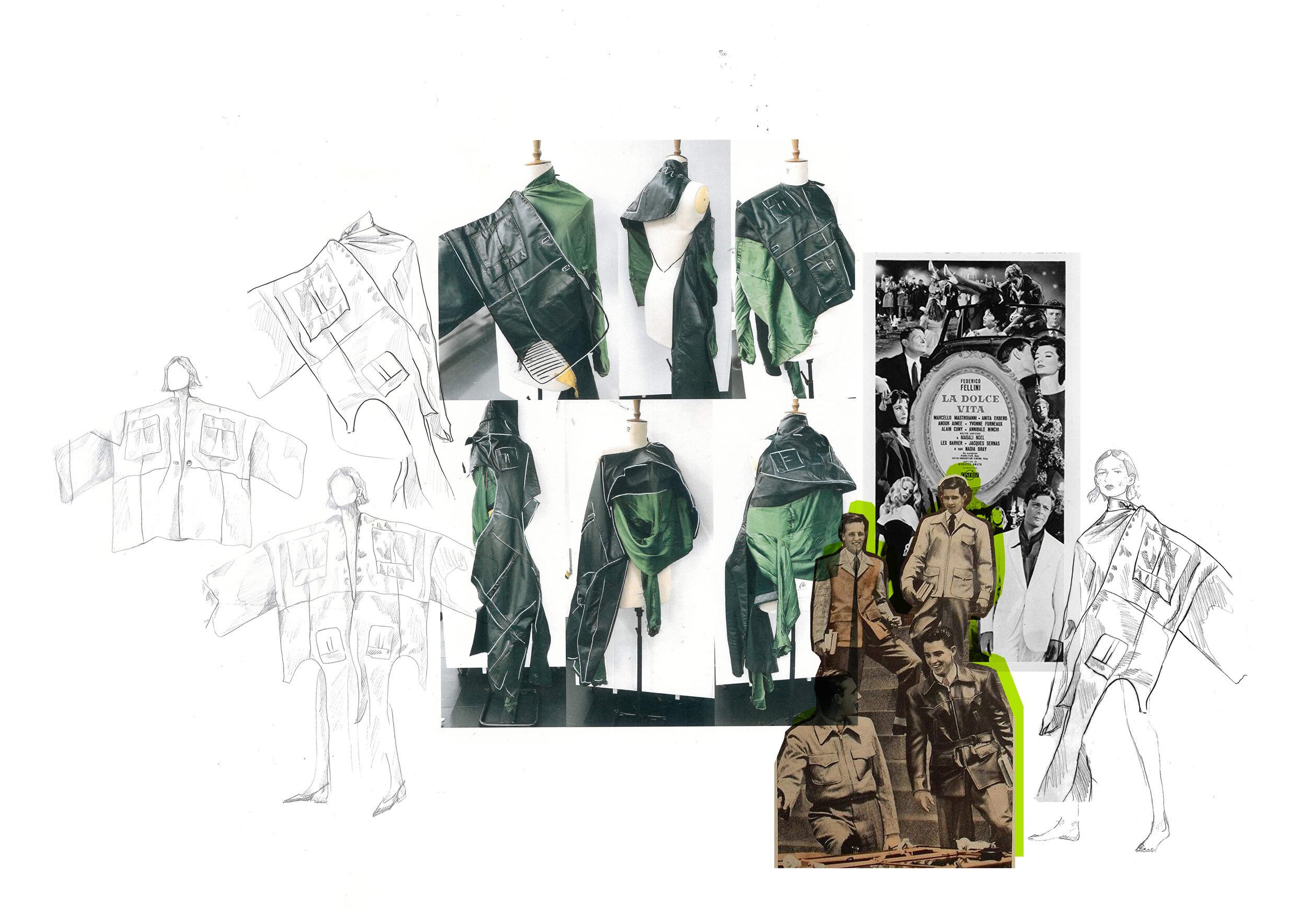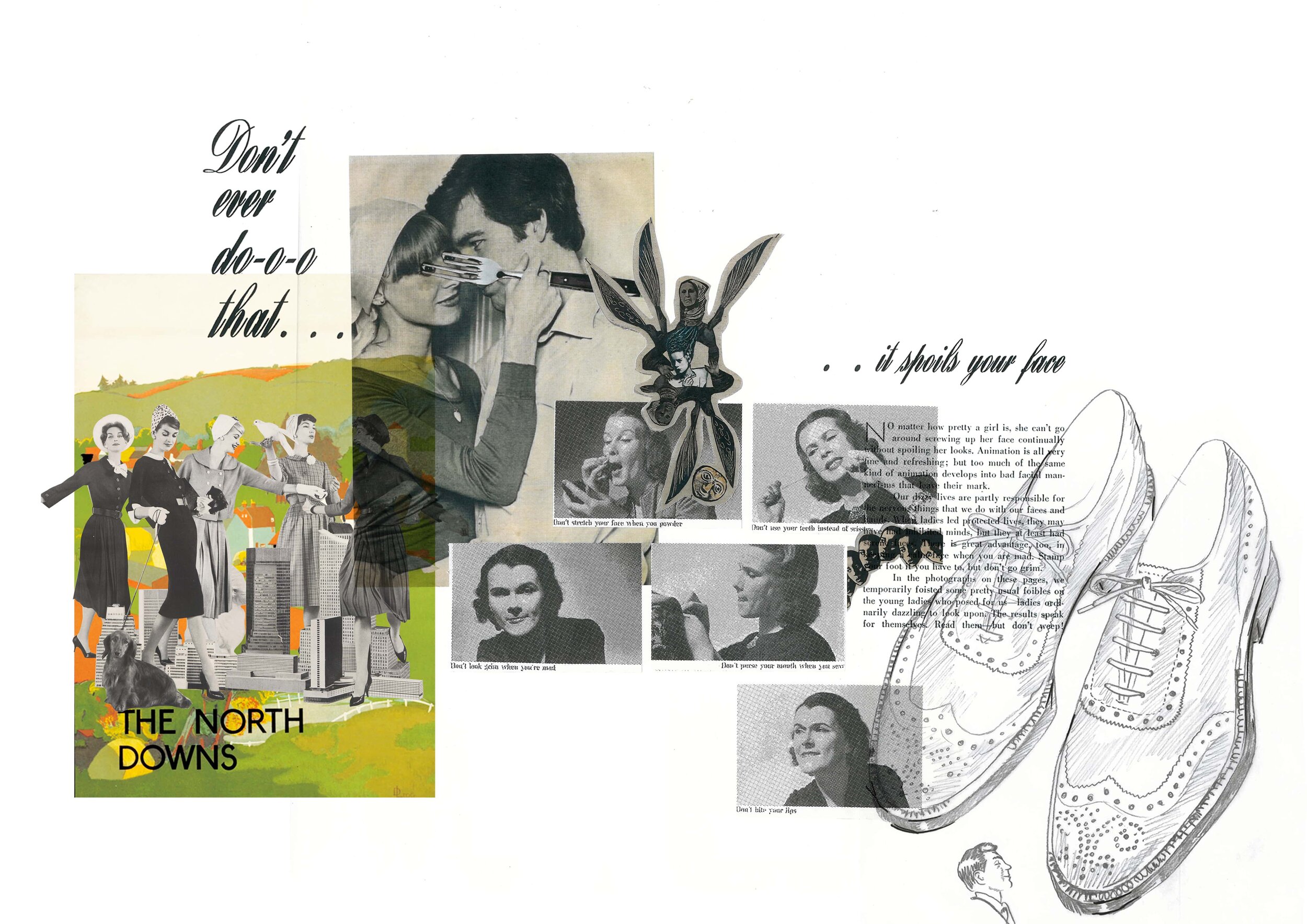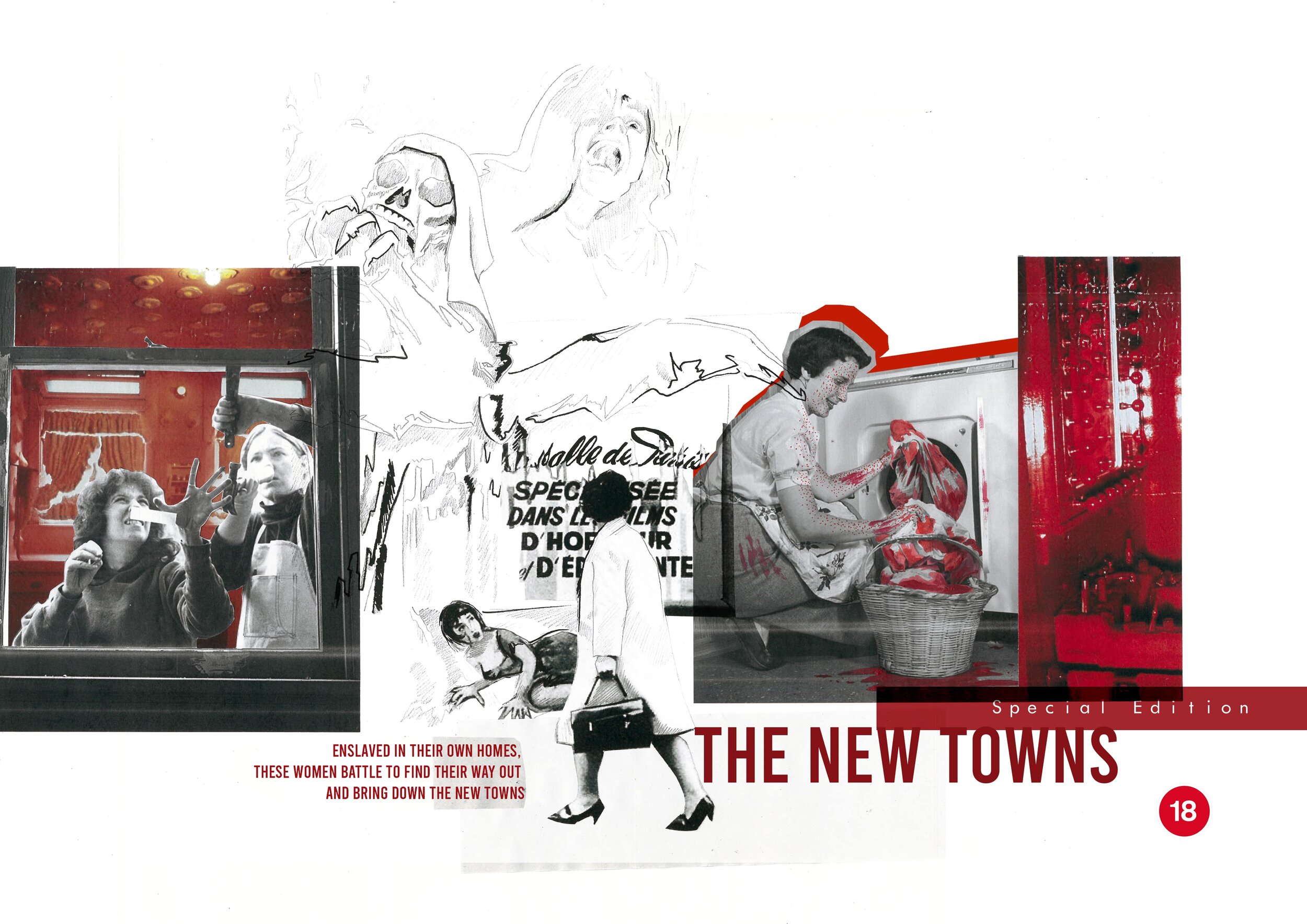Meet Emily Tonge, who is graduating in fashion design from Manchester Metropolitan University. Emily’s final year project was inspired by the new towns of the 1950s and 60s and delves into domesticity and expectations of women in this time. Sourcing vintage and antique fabrics is one way Emily has created both a historically accurate and sustainable collection, two crucial aspects of her work. Read on to learn more about Emily and her final year project.
What is the most valuable thing you have learnt at university?
I have learnt endless amounts of information throughout my time at university; everything from technical sewing skills to library research, screen printing and pattern cutting. But the most valuable thing that I have gained, is how to link all this knowledge together in my own way and to create my own design process. The insight from tutors to push me to follow my strengths and the facilities have allowed me to experiment with what I am capable of. Coming out the other side of my degree, I have a strong design process and aesthetic identity.
What was the starting point of inspiration for your final project?
During my second year Contextual Practise studies, ‘Art and Architecture’, I learnt of the 1950s ‘New towns’ - a phenomenon of the post-war housing boom. When the government began creating these ‘New towns’ for families in cities to migrate to, there was little consideration for women. The lack of infrastructure ensnared women in a life of domesticity; trapped within their own homes, while their husbands were away at work. As a starting point, I thought this reality which faced these women could form the basis of a modern-day horror film.
I began to build a dystopian world where the 1950s New Towns still exist, taking inspiration from the 1970s installation Womanhouse led by Judy Chicago, movies from the 1950/60s and vintage interiors and clothing. Many of the silhouettes I design come from stand work with generic garments, which have been manipulated or deconstructed on the stand. I select the garments based on the concept I am working on. For my final collection, it has focused on the 1950s and 60s, so I sourced a variety of garments from this period to experiment with.
I enjoy using a mixture of menswear and womenswear items, particularly for outerwear design, the oversized nature of a lot of men’s clothing provides excellent structure and volume which I enjoy using in my womenswear. I begin the process by studying the garment and drawing the details and the construction before I take it on to the stand to creatively drape into different shapes. For example, working with a 1960s leather jacket I sourced for this unit, which is quite a fitted shape, I wasn’t getting the desired lengths or volume that I wanted so I began to deconstruct it and open it up. I document the process of working on the stand, by taking photos, which I then draw on to a model and begin to develop garment designs.
What form will it take?
For my degree deadline, I am aiming to make a range of garments including a leather jacket, coats and several dresses, alongside my portfolio, instead of a full six look collection as previously anticipated. My portfolio has been extended to include more variety, through extra briefs and competitions. My course mates and I have been fortunate enough have had our degree show reinstated at the next available opportunity, so I look forward to exhibiting my work as part of that event.
What materials have you used and how did you source them?
I have sourced a variety of vintage and antique pieces to utilise in my garments as an approach to sustainability. Due to the references I have made to vintage interiors, I have sourced an original 1950s Eiderdown duvet, which I also aim to re-purpose into a coat for my collection. Also through sourcing on websites such as Etsy and eBay, I’ve been able to accumulate large quantities of vintage lace and lace doilies, which I plan to use to make an entire look from and the left-over lace will also feature as trims in some of my other outfits. I’ve also been collecting vintage buttons and fastenings, to avoid buying new.
This sits alongside, my printed fabrics, which have been sourced on fabric trips to London. Print Design is my specialism, which I thoroughly enjoy, working with both digital and wet screen printing. My inspiration for prints comes from my concept research - vintage lingerie, floral interiors and objects. The use of print is limitless and allows me to continue to express my narrative through surface.
Part of my print development has been the use of halftone images both in making screens and in digital designs. The retro feel to the artwork, once they convert into a halftone, is reminiscent of vintage movie posters. It also means when working with wet print, I can create depth and shading in the images I’m printing using just a single layer of colour. My collection also features my print designs in the form of devoré, which I screen-print by hand. The process offers beautiful results, which I believe adds a sense of luxury to my work.
How has it evolved from your initial ideas and what have you learnt along the way?
My initial ideas for my final collection revolved around the unattainable and contradictory expectations for women, with links to female purity and domesticity. During summer break, while on an internship in London, I built up a considerable sketchbook and concept to present on return to university. I made the most of my time in London by visiting exhibitions such as the Mary Quant spotlight at the V&A, fabric sourcing and developing prints. On reflection, my eagerness over summer to get a head start on my collection had meant my concept lacked depth; I’d rushed through critical areas of my design process, such as stand work and my research was superficial in parts.
Being away from home, outside the studio and university library, affected my process of researching, collecting original imagery and using full-scale mannequins for drape. In hindsight, it would’ve been more beneficial to start again and build up a narrative with depth. By sticking with a concept I was not passionate about, I couldn’t become engrossed in my work and feel excited about the process. Over Christmas, I finally decided that I needed to re-contextualise my work. I am now confident that my work echoes the most active elements of my design philosophy, and I am fully engaged and excited by my work.
I believe it is imperative that my work has a purpose, and through my design, I can raise awareness of more significant issues outside of fashion, particularly for women. I have learnt, for me, the concept element of a project is the most vital part, to drive my work and immerse myself in the process. It’s incredibly important that the concept includes a narrative which reflects my feminist beliefs, and that each research strand adds depth to the story and keeps linking back to that narrative.
What are the messages and themes behind your project that you want people to take away?
As mentioned previously in, contemporary art has been a great inspiration for my work. The installation works led by Judy Chicago and Miriam Schapiro in 1972 have profoundly impacted my practice and how I have wanted to use my work. As leaders of the California Arts Feminist Art Program, they directed their students and other local artists into an installation project where they took over an abandoned home in Hollywood. They encouraged the artists to create works which would raise awareness of sexism by utilising the home environment and exposing conventional female social roles within it by subverting and exaggerating them. I came across the installation during research in my first year and felt an immediate connection with concepts encouraged by Chicago and Schapiro.
I have tried to replicate this idea of subverting and exaggerating issues in our society, that face women, in all my projects since coming across it and feel it has shaped me as a designer. Similarly, I have developed a passion for working with second hand or vintage materials. This initially started as just sourcing for stand work, sampling and fastenings. But I quickly learnt, that using items that have already had a life before I begin to work with them, often adds depth to the concepts I am building and limits the environmental impact of what I make and buy. It has allowed me to avoid buying new and recycle hundreds of lace doilies, as well as a variety of other second-hand items.
What’s an aspect of the fashion industry that you’re passionate about fixing or having a positive impact on?
The fashion industry is one of the biggest polluting industries on the planet and there needs to be a shift in the way that it produces and sells clothing. The culture needs to change and consumers need to lower their intake of fast-fashion. I hope to work within a high-end brand that focuses on quality over quantity and helps consumers to see that investing in quality clothing that is beautifully designed and crafted is better than throw-away outfits. Additionally, as I have done with my final collection, working with deadstock fabrics and upcycling vintage items is a viable way to create amazing one of a kind garments that aren't as harmful to the planet. I hope our generation of designers can help bring about this change in the industry.
What is your plan once you finish your BA?
Following graduation, my career aspirations are to work within the high-end luxury fashion market as a womenswear designer. The main reason for this is greater creative freedom and a more experimental design process. Throughout my summer internship at Preen, I saw first-hand how their designers work, and it very much appeals to me. Each designer works on several looks each season and work on the stand with pattern cutters and machinists within the studio to toile and drape. While also creating print designs and do some of their sampling within the space.
After my experiences at Preen, it has reinforced my goal to work in the high-end market, with a focus on print design. This ambition has manifested itself throughout my process, through the use of luxury fabrics such as leather and silk, where I use high-end finishing techniques as well as my design methods where I enjoy working on the stand and draping many of my designs. Design houses I look up to include Simone Rocha, J.W Anderson, Maison Margiela and Phoebe Philo for Celine, all of whom I find are very innovative and push the boundaries of modern womenswear, challenging conventional silhouettes and reinterpreting them. Following on from graduation, I hope to move into employment with a womenswear brand to gain experience and from there work my way into a designer role within a high-end company.
I have also applied for two fashion masters programmes, to continue to develop my practice and aid me in achieving my long-term career goals. But as these courses are extremely competitive, I haven’t made them my sole focus. Either way, I hope to build upon the skills I have nurtured throughout my time on the BA course here at Manchester, making me a stronger and more developed designer.












